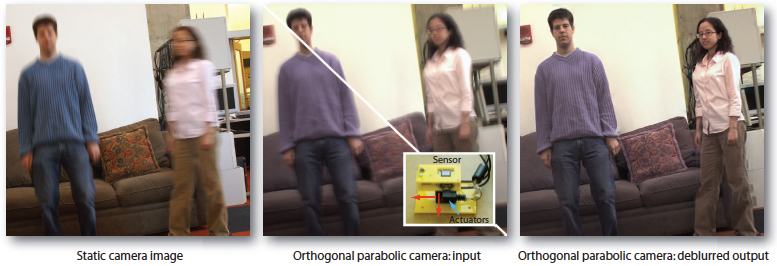
Presented at ICCP 2010
1 Massachusetts Institute of Technology
2 Weizmann Institute of Science

![]()
Object movement during exposure generates blur. Removing blur is challenging because one has to estimate the motion blur, which can spatially vary over the image. Even if the motion is successfully identified, blur removal can be unstable because the blur kernel attenuates high frequency image contents. We address the problem of removing blur from objects moving at constant velocities in arbitrary 2D directions. Our solution captures two images of the scene with a parabolic motion in two orthogonal directions. We show that our strategy near-optimally preserves image content, and allows for stable blur inversion. Taking two images of a scene helps us estimate spatially varying object motions. We present a prototype camera and demonstrate successful motion deblurring on real motions.
![]()
![]()
![]()
This research is partially funded by NGA NEGI-1582-04-0004, by ONR-MURI Grant N00014-06-1-0734, by gift from Microsoft, Google, Adobe, by Quanta and T-Party, and by US-Israel Binational Science Foundation. The first author is partially supported by Samsung Scholarship Foundation. The second author acknowledges Israel Science Foundation. Authors would like to thank Peter Sand for his help with building the camera prototype, and Myung Jin Choi, Roger Grosse, and HwanChul Yoo for being great models.
![]()
Last update: Aug. 18. 2010